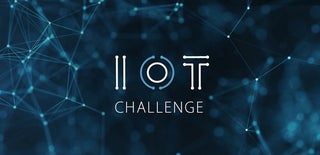Introduction: IOT Based Water Level Controller Using NodeMCU ESP8266
This is Instructable on how to create an IOT based water level controller.
Features of this project are:-
- Real-time water level updates on the Android app.
- Automatically turn ON the water pump when water reaches below a minimum level.
- Automatically turn OFF water pump when water reaches above a maximum level.
- Manual option to control the water pump at any water level.
Requirements:-
- NodeMCU ESP8266 development board
- HCSR04 ultrasonic sensor
- Breadboard
- Single channel relay board (to control water pump)
- LM7805 +5V voltage regulator IC.
- Battery (9V-12V).
- WiFi Router (to connect NodeMCU to internet)
- Firebase (to create a database)
- MIT app inventor 2 (to create Android application)
So let's get started.
Step 1: Setup Firebase and Get Secret Key
We are going to use a real-time database by Google firebase. This real-time database will act as a midway broker between Nodemcu and Android device.
- First of all, navigate to firebase site and log in using your google account.
- Create a new real-time database.
- Get real-database URL and secret key to access the database from the app. For a detailed tutorial, you can check out how to integrate firebase with MIT app inventor.
Step 2: Create App Using MIT App Inventor 2
We are going to use MIT app inventor 2 to create our Android app. Its very simple to use and easy to integrate win Google firebase.
Just follow these steps:-
- Download MIT app inventor project file (.aia file) attached below.
- Then go to MIT app inventor >> projects >> import project (as shown in screenshot 1). Select the file from your computer and upload it.
- Open project and navigate to Screen3 (as shown in screenshot 2).
- After that, go to layout window, click on firebaseDB1 (located at bottom of the workspace), enter database URL and key. Also set ProjectBucket to S_HO_C_K (as shown in screenshot 3).
- At last, click on the "build" button and save app file (.apk file) to your computer. Later transfer that file to your Android device.
Attachments
Step 3: Configure Arduino IDE for Nodemcu Esp8266
- First of all, configure Arduino IDE for Nodemcu esp8266. I would recommend this step by step tutorial on NodeMCU basics by Armtronix. Thanks Armtronix for this helpful tutorial.
- After that, add these two libraries (as shown in screenshot) :-
1. Arduino Json
Step 4: Upload Code With Some Necessary Changes
You must do some necessary changes in code before uploading to Nodemcu.
- Download attached file (.ino file) and open it with Arduino IDE.
- At line 3, enter database URL without 'https://'.
- At line 4, enter database secret key.
- At line 5 and 6, don't forget to update WiFi SSID and Wifi password (to which you want to connect NodeMCU ESP8266).
- Scroll down a little bit and update minimum water level, maximum water level, and margins according to the depth of your own water tank.
After that, upload program to NodeMCU ESP8266.
Attachments
Step 5: Configure Hardware
- Create a circuit as shown in the above figure. You can use either a 9V or 12V battery.
- Put ultrasonic sensor at the top of the water tank.
- Connect water pump using a relay board (optional during testing).
Step 6: Magic Time!
- Install the app (created in step 2) on your Android device.
- Supply power to the setup.
- Wait for NodeMCU to connect to the hotspot (you can use either router or portable hotspot).
- All Done! Now you can control/monitor water level from anywhere in the world.

Participated in the
IoT Challenge












